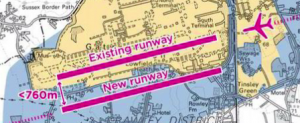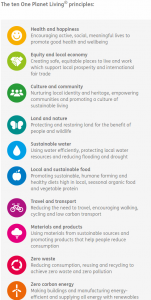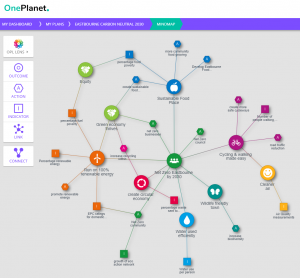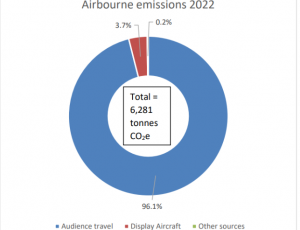Speech at Eastbourne Borough Full Council Meeting
Background:
Gatwick airport have requested Eastbourne Council’s support for their plans to expand the airport capacity from 46 to 80 million passengers a year. Eastbourne’s Scrutiny Committee met with representative of Gatwick Airport to question them over their plans.

The Recommendation of the Scrutiny Committee to the Full Council was as follows:
1. Makes any support for Gatwick Airport’s Northern Runway Project conditional on Gatwick Airport’s production and pursuit of a credible plan, in partnership with its Scope 3 stakeholders, to work towards carbon neutrality across its Scope 3 emissions by 2030.
2. Calls on any Government to mandate a faster transition to low-carbon aircraft fuels, and to provide meaningful support to the fuel industry, airlines, manufacturers and other aviation industry stakeholders to achieve this.
Speech by David Everson: Chair EEAN Transport Group to the Full Council
The Scrutiny Committee propose you let the airlines and Gatwick airport work towards carbon neutrality by 2030 and that you encourage government to support a faster transition to sustainable flying.
On the Gatwick Website it states that the UK Sustainable Aviation Industry has a road map for net zero by 2050 not 2030!
The government’s own official advisor, the Climate Change Commission, has stated ‘that the 6th Carbon Budget set for the government will be breached if net airport expansion is not significantly constrained.’
What is special about the 6th Carbon Budget? It covers the period 2033 -2037. Why will the Carbon budget be breached? Because for the first time the UK will have to start to include all the CO2e emitted by international flights leaving the UK.
The Department of Business Energy and Industrial Strategy, this month, published the UK’s Greenhouse gases emissions. It showed that the UK produced 427 million tonnes of CO2e, of this the airline industry was responsible for about 2% of the emissions due primarily to domestic flights.
It is important to note these figures do not include any international aviation emissions for flights leaving the UK. If they were, it would add another 37M tonnes of CO2e to the total, this would bring the total figure for aviation to a staggering 10% of all the UK’s annual emissions.
So the CCC are saying to the Government do not allow airports to expand if you want to meet your Carbon budget.
What about improvements to make the aviation industry more sustainable
Sustainable fuel for example.. – At the World Economic Forum in Davos January this year, the corporate signatories of ‘Clean Skies for Tomorrow’ pledged to…… ‘achieve sustainable aviation fuel blend of 10% in global jet fuel supply by 2030. … That means by 2030 – 90% of aviation fuel will still be fossil fuels!

The International Energy Authority (IEA) commented in Sept 2022 – ‘renewable synthetic Kerosene is relatively far from commercialisation’
What about improved Aircraft Design
The International Energy Authority (IEA) in Sept 22 talks about better aircraft designs reducing GHG emissions but state… ‘New aircraft are more efficient – but this has been insufficient to keep up with growth demand’.
What about Economics
I think the expansion of Gatwick airport will harm Eastbourne’s economy by allowing more Brits to travel abroad rather than staying in the UK to holiday.
Summary
I ask you to publicly and strongly reject Gatwick’s request to support their expansion. To do otherwise would make your declaration of Carbon Neutral 2030 a sham!
The Aviation Industry is not sustainable and will not be for at least a quarter of a century.
David Everson: Chair EEAN Transport Group to the Full Council








